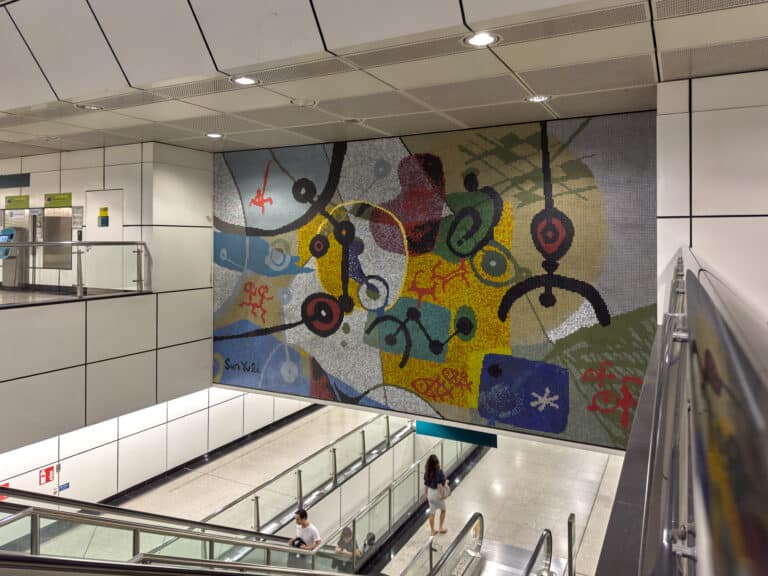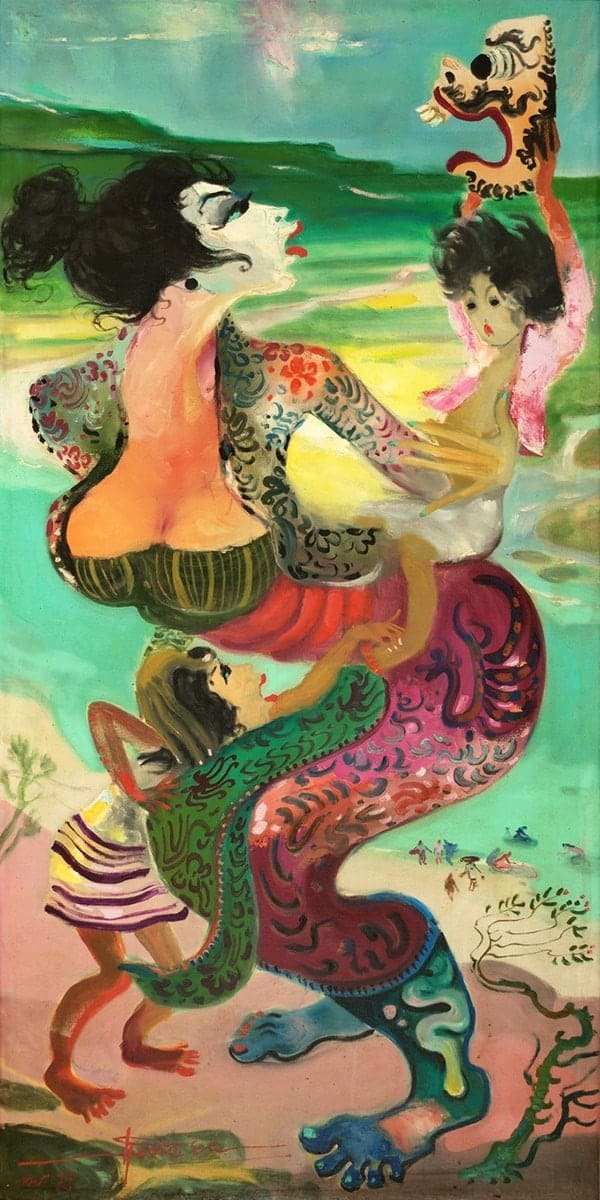At the press preview for this year’s OH! Open House tours, executive director Alan Oei commented that one of the challenges faced by his team was the need to move away from attendees’ voyeuristic desires to survey the insides of homes, or what he colourfully referred to as “house porn.”
This year, in an innovative twist, OH! Open House participants are permitted to embark on 4 different tours 1) The Moral Hazards of Growing Nutmeg in a Faraway Land; 2) All the King’s Painters; 3) Fantastic Beasts and Man-Eating Flowers and; 4) Buy Empire, Everyday Everywhere. At the end of each of the first 3 tours, viewers return to the main starting point in Chatsworth International School in order to choose their next tour.
Oei and his team have endeavoured to explore Singapore’s colonial history and the neighbourhood of Emerald Hill while attempting to make it all interesting, and a lot less like a “boring social studies textbook.”
But really, what does an actual social studies textbook look like these days? Does anyone remember? Here’s what we found in Popular Bookstore:
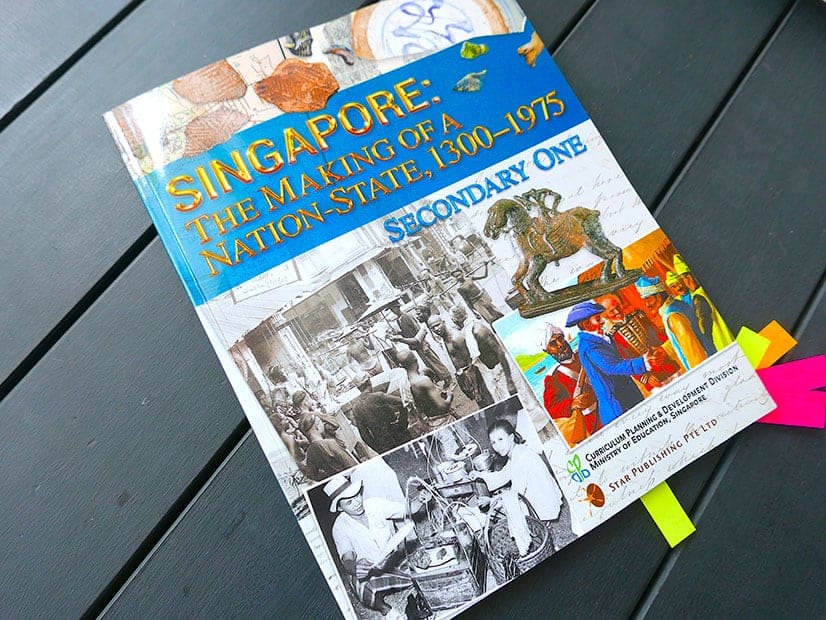
We know that Singapore school books have been in the press recently for all the wrong reasons, but we thought it might be fun to have a run through this book. How do the artworks of OH! Open House measure up to what kids are taught in schools?
1) The Founder of Modern Singapore, Sir Thomas Stamford Raffles
Interestingly, our official school text makes little mention of Raffles himself – it offers a narrative which neither reviles nor canonises him. His famed statues in Singapore are not referred to, nor are they photographed. Here’s a rather placid introduction to how Raffles installed a friendly Sultan of Johor, so as to be able to establish a trading settlement in Singapore, thereby conferring the British with a strategic geographical advantage:
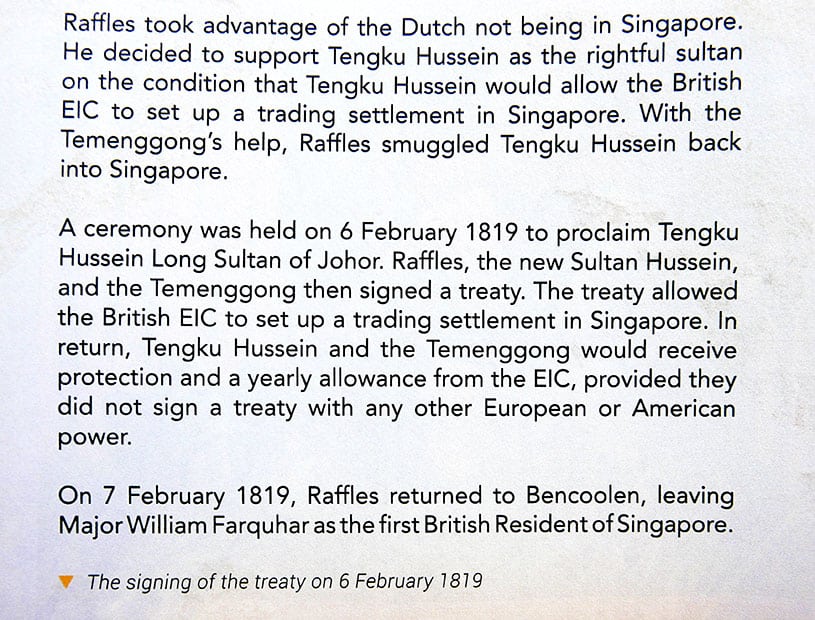 Raffles (presumably, second from the left):
Raffles (presumably, second from the left):

The OH! Open House art tours confront Raffles head on, with versions of his dismembered torso dangling on a stage behind the starting point of all tours.
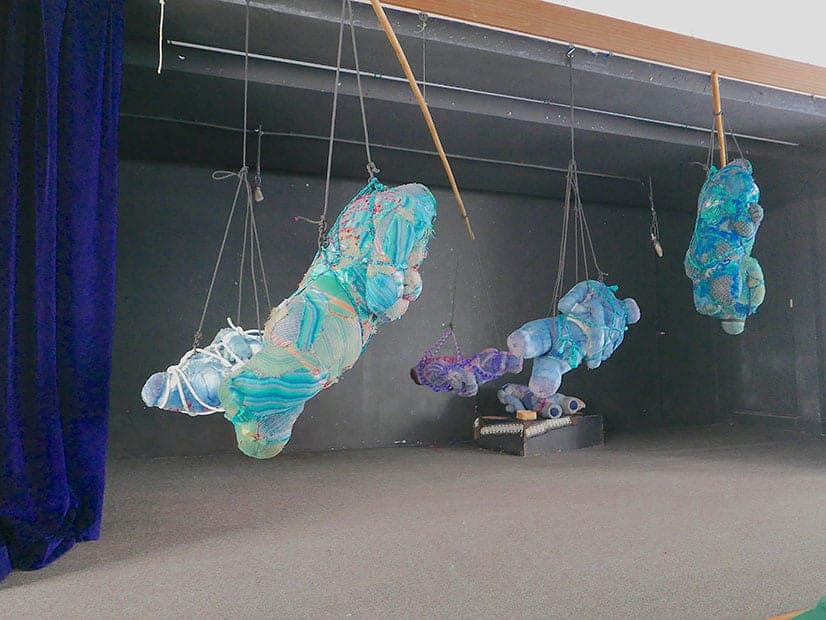
The hanging torsos have been fabricated by Javanese women, who “attacked” the effigies with needles and stuffing, inflicting a kind of savagery on Raffles which is not commonly seen in Singaporean narratives about the colonial figure.
It reminds us that while we continue to celebrate Raffles as the founder of modern Singapore, our Javanese neighbours saw him in quite a different light – for instance, he was instrumental in the looting and destruction of the kraton (palace) in Yogyakarta during the Java War, in 1812.
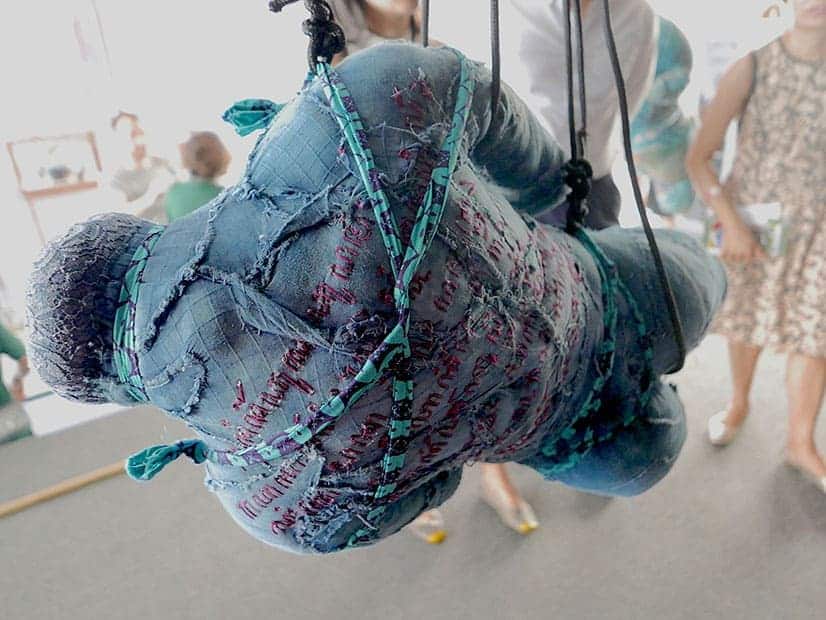
In addition to the stabbing and attacking of Raffles, Ong also offers the viewing public a chance to feast upon his “flesh.” In Open Love Letters (2018), Ong cooks Javanese-style love letters (or kueh kapit) on a grill made from a dismembered torso of Raffles:
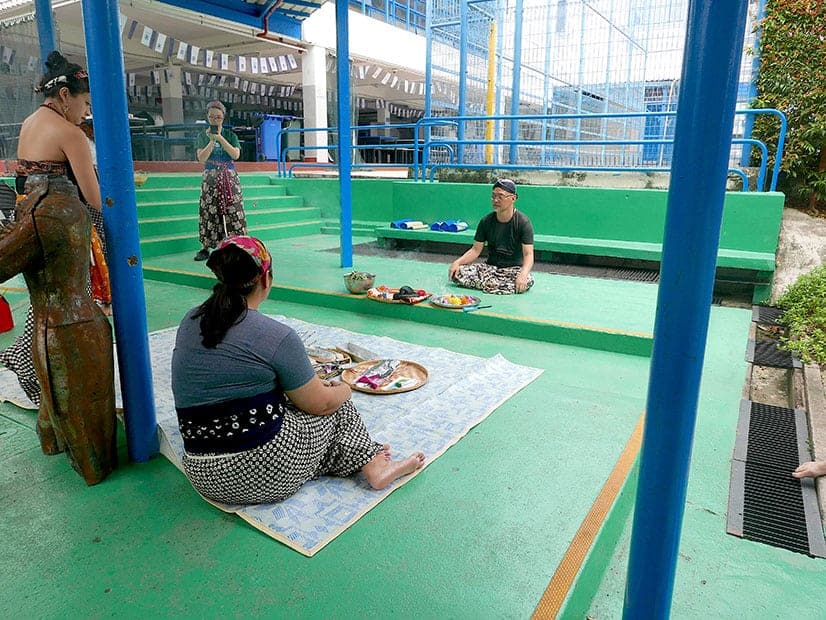
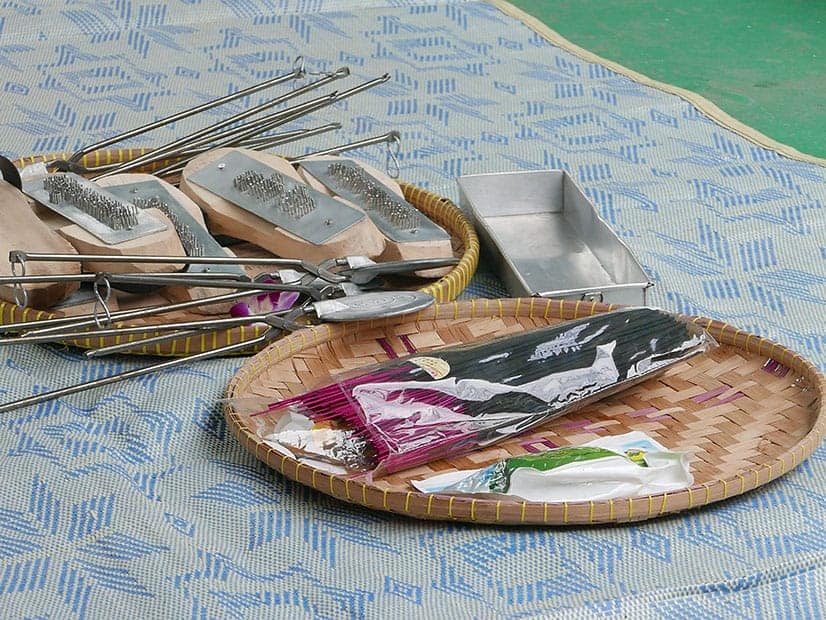
If – after all that – you still have an appetite for dismembered limbs, Anthony Chin’s dialogue with the colonial legacy of Stamford Raffles sees engagement with yet more body parts, this time with a symbol of Raffles’ own master, the British monarchy. Chin’s massive colonial boot of oppression swallows up the entire front room of a shophouse, making you feel a bit like you’ve drunk an Alice-in-Wonderland-type shrinking potion. The boot is meant to be that from a golden statue of Prince Albert, which can be found in London.
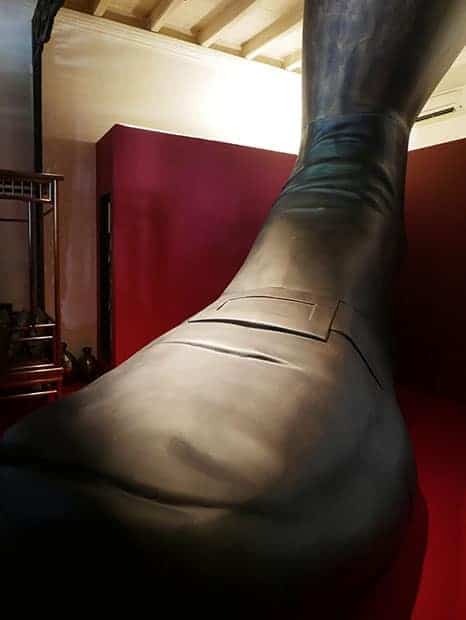
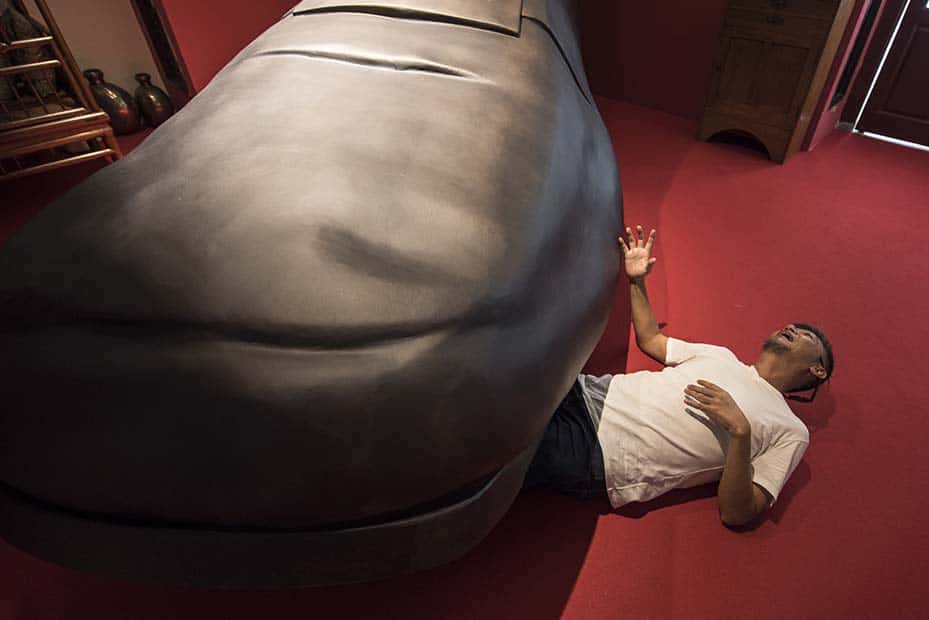
The work is named Your Touch Turns to Gold (2018).
Accordingly, touch this black boot, and it will turn to gold as a result of the warmth generated by your hand. The gold handprints slowly disappear with time, and the blackness of the giant boot swallows up the space once again. The aggressively- red walls of the room can’t help but recall colonial acts of violence and the participants’ acts of obeisance, of touching the foot of a disembodied white master, remind us of the trade-offs which have been made in the name of colonial progress.
2) Whither the Immigrants?
We’ve been told (ad nauseum sometimes), that we have always been a migrant society, and therefore should not belabour the point of a separate Singaporean identity as a means to resist the waves of migration which are needed to keep our ageing population going.
Here’s what the school textbooks have to say about immigration:
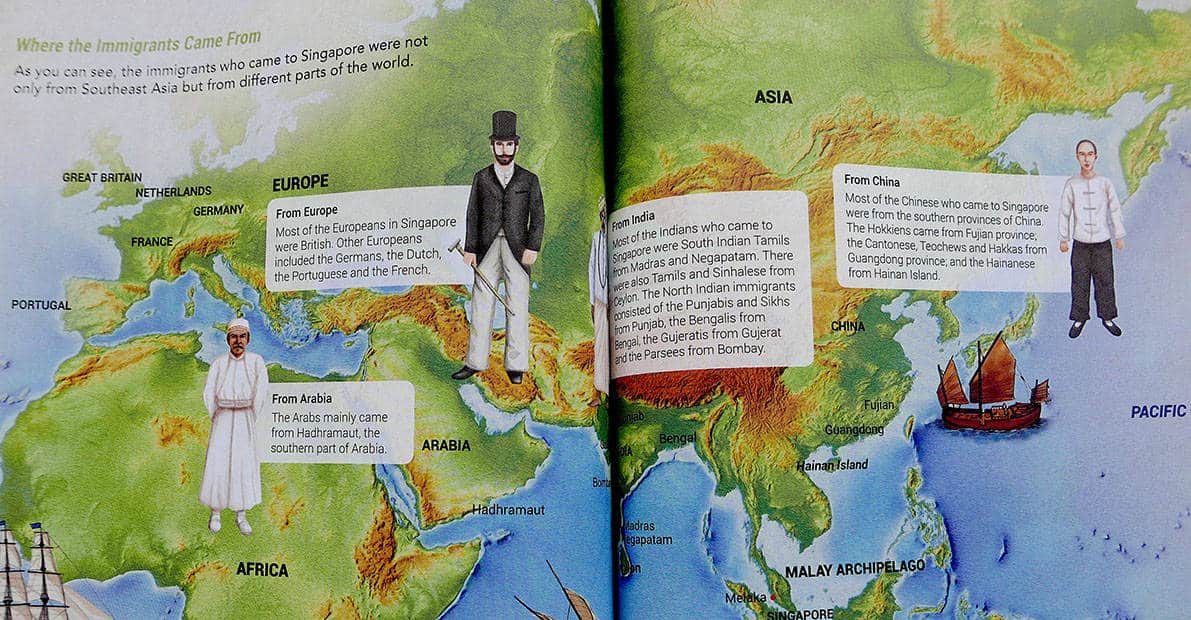
What about the Armenians though? Where are they on this map?
Miss Agnes Joaquim (or Ashkhen Hovakimian, as she was also known) is well-known to us as the creator of the Vanda Miss Joaquim, Singapore’s national flower, an orchid hybrid. What’s perhaps less well-known is Agnes’ history as a woman in the mid-late 1800s in Singapore. Artist Mamakan, whose work Daughter of the Soil (2018) is a tribute to Agnes, explained that in olden times, it was exceedingly rare for a woman to be occupied in the garden, the way Agnes had been. Women were meant to be kept away from the outdoors and people initially thought that Agnes had been incapable of creating the cross-bred flower, supposing instead that she had chanced upon it randomly in her garden.
Mamakan’s gorgeous installation in an Emerald Hill shophouse features the sculpture of a crinoline skirt, overlaid with vintage lace which has been buried in actual soil from Miss Joaquim’s garden. The sculpture is placed together with various pictures and memorabilia which feel as though they could have belonged to the lady herself:

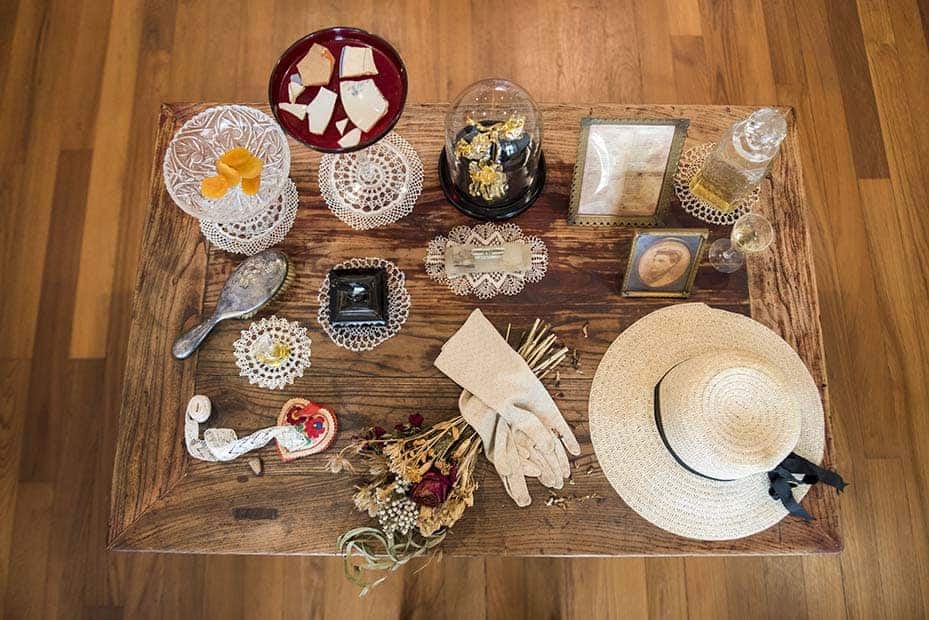
The work Daughter of the Soil was so named to reflect the way in which Agnes’ reputation has been “soiled” over the decades in Singapore. One startling incident took place in 1981, when critics objected to the selection of the Vanda Miss Joaquim as the national flower, as it had been created by a woman of Armenian descent. Never mind that Agnes as well as her mother, had been born in Singapore, the honour should have been given to a true “son of the soil,” such as the Chinese creator of the Vanda Tan Chay Yan – or so the argument went.
Does any of this quibbling over what it means to be Singaporean and the value of “foreign talent,” sound familiar to you?
3) The History of Orchard Road
So, the textbooks tell us that Orchard Road used to be a nutmeg plantation, but that the crops eventually failed:
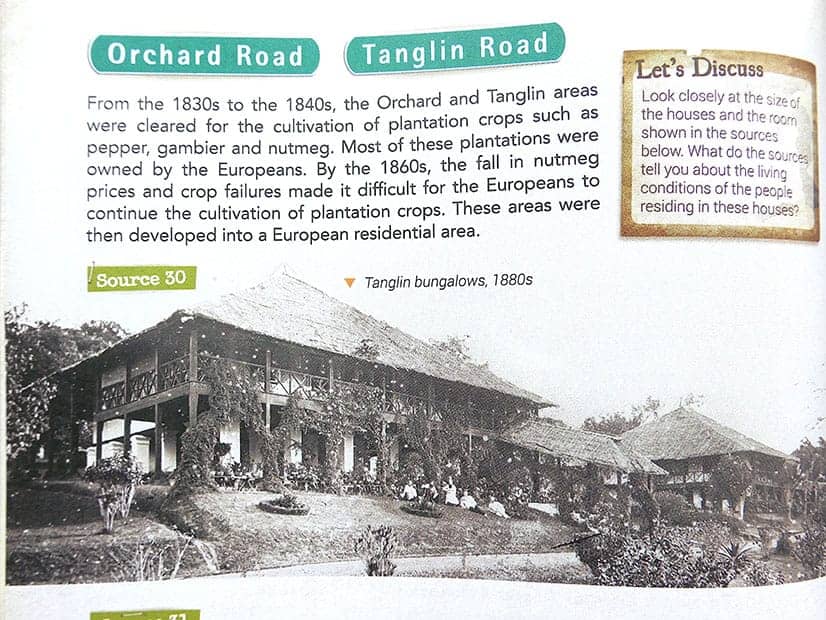
Artists Allison Low and Ho Wai Kit take the narrative further with their spooky work Arcane Root (2018), which visualises the story of the beetles which infected the roots of nutmeg plants and eventually caused the plants to be destroyed.
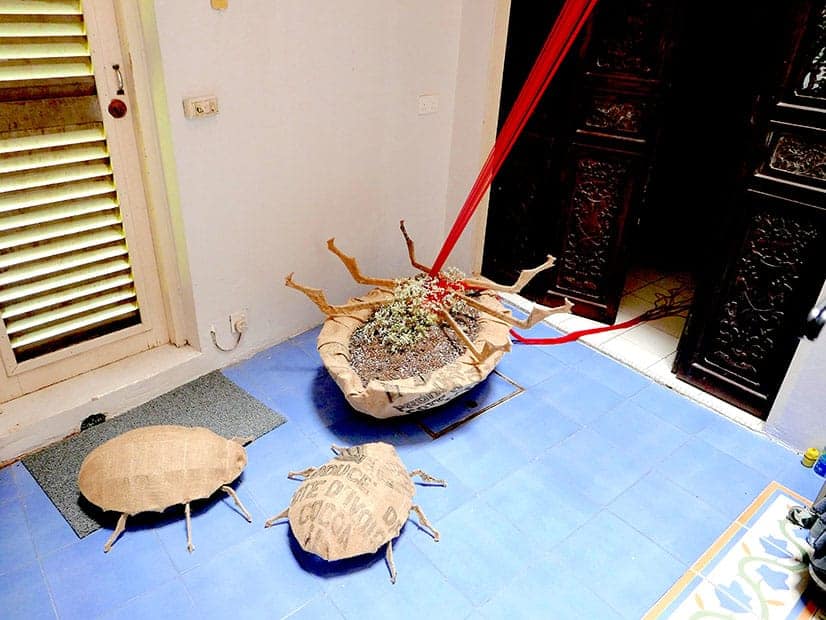
Juxtaposed against creepy images of Victorian children and tendrils of funereal red thread, the work speaks of decay, destruction and ephemerality:
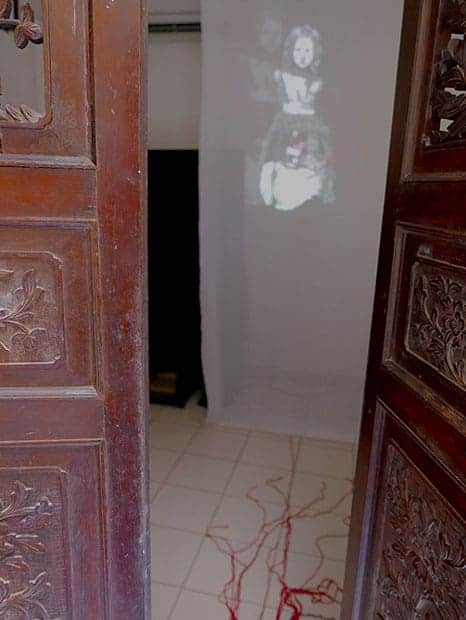
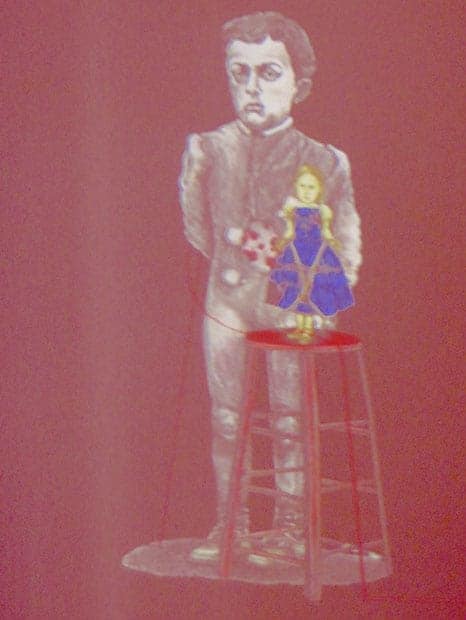 Speaking of creepy things, special mention should also go to fashion photographer turned artist Lenne Chai, with her installation Salvation Made Simple (2018). Hidden away in Orchard Plaza, this section of the art walk Buy Empire, Everyday Everywhere, was unfortunately not guided during our tour. Nonetheless, we would highly recommend making a beeline for the shopping centre at the end of your tour. Chai parodies the commercialisation and commodification of religion in Singapore by creating a shrine to a forgotten “goddess” of the country.
Speaking of creepy things, special mention should also go to fashion photographer turned artist Lenne Chai, with her installation Salvation Made Simple (2018). Hidden away in Orchard Plaza, this section of the art walk Buy Empire, Everyday Everywhere, was unfortunately not guided during our tour. Nonetheless, we would highly recommend making a beeline for the shopping centre at the end of your tour. Chai parodies the commercialisation and commodification of religion in Singapore by creating a shrine to a forgotten “goddess” of the country.
 “She who is blessed,” wants to reach out to Millennials and will grant them all their wishes by way of holy merchandise such as T-shirts and fidget spinners, easily available for actual purchase through vending machines. Bring change – you’ll not be able to resist taking some of these hilarious things home:
“She who is blessed,” wants to reach out to Millennials and will grant them all their wishes by way of holy merchandise such as T-shirts and fidget spinners, easily available for actual purchase through vending machines. Bring change – you’ll not be able to resist taking some of these hilarious things home: 
From the hellish destruction of nutmeg plantations to the holy consecration of Orchard Road as a consumerist paradise, OH! Open House 2018 offers up an education into our colonial past that resonates on a level which goes beyond mere book-learning.
This absolutely essential viewing for Singapore-dwellers or indeed, anyone who wishes to gain new insight into our colonial history.
Limited tickets are still available and the tours run on weekends, until March 25.






